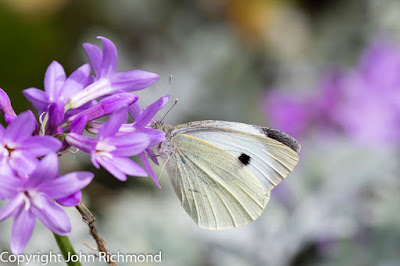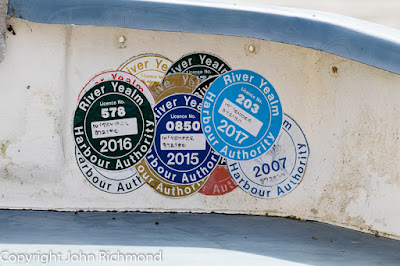Let's take the 55-250mm. Great, lightweight lens that's easy to carry and certainly capable of generating saleable photos. Two problems with it. Firstly, image quality falls apart much beyond 200mm. It's not bad - but it's not good enough. Secondly, and this is more important, Maria has grabbed it for her own use.
Which leaves me the Sigma 180mm macro, naked, or with a Sigma 1.4x teleconverter. Big and heavy, it's invaluable for tripod work, providing superb image quality at macro and close up distances. But it's not optimised for longer distances - though it does a good job - and with no image stabilisation it's not one for more general use.
 |
| Canon 70-300mm f4-5.5.6 L IS lens mounted on Maria's 600D |
 |
| European robin, 300mm and close focus, handheld 1/200sec |
| 100% crop of the Robin's eye and beak. Click to show at full size. Standard sharpening for screen only |
I don't have the steadiest of grips but the ability to handhold at 300mm at 1/50th to 1/100th of a second and get professionally sharp images is a major bonus. I have a tripod collar and frequently use the lens with it for plant and garden work but, for walking around, it's easier to travel unencumbered with a tripod. The effectiveness of the IS gives me the confidence to travel with the lens, knowing it will perform in most circumstances.
 |
| Dahlia 'Blue Bayou'. Handheld, 300mm, 1/80sec |
The acid test, of course, is how many saleable shots the lens has generated. Well, since I bought the lens, I've uploaded to Alamy 341 images. 99 have been taken with the 70-300mm. Allowing for the natural enthusiasm to try out a new piece of equipment that's a pretty reasonable ratio. My standards are high - they have to be for acceptance at the agency - so a lens that can deliver the technical quality required is a valuable asset and worth the money I paid. I might not see sales from thjese particular images for a while - but the images are good enough to grace my Alamy portfolio. Judge for yourselves.
Now to try it in winter conditions! Should be interesting,







No comments:
Post a Comment